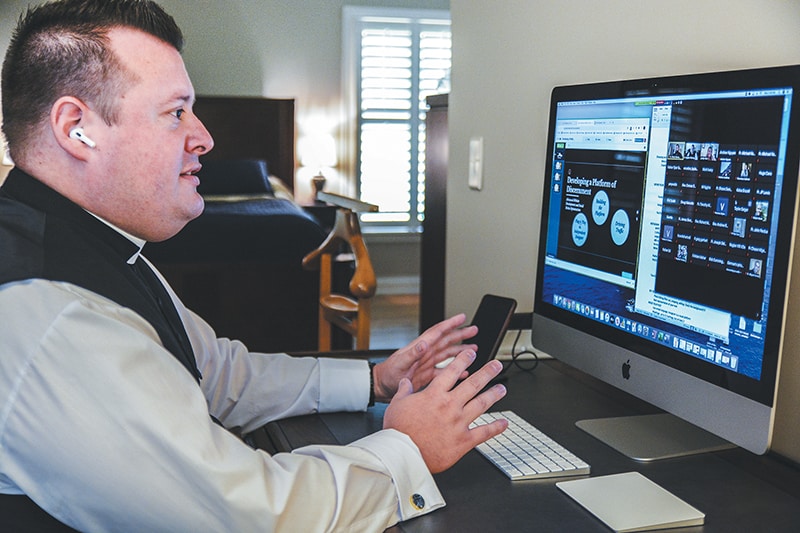
Effective use of the internet and social media is crucial in reaching out to young men discerning whether they have a vocation to the priesthood, according to Father Austin Gilstrap, vocations director for the Diocese of Nashville.
“In the world we live, the internet really speaks to your audience in a way nothing else does,” Father Gilstrap said while leading the workshop “Developing a Platform of Discernment” for the National Conference of Diocesan Vocations Directors’ annual convention. “They are consistently on the internet. They are consistently using social media.”
Father Gilstrap and Jerilyn Rost, coordinator of the Vocations Office, led the workshop discussion of ways dioceses can use their website and social media platforms to help men with the discernment process.
After Father Gilstrap was named director of vocations two years ago, he and Rost set about rebuilding the vocations website, www.nashvocations.org.
“Before you get to content, you have to decide exactly what your goal is,” Father Gilstrap told the 55 people listening to the online workshop. “What is the narrative you’re trying to drive with your platform. Good websites tell some sort of story. When someone goes on your site what do you want them to do.”
“For us the primary goal is to get a prospective seminarian to call the director of vocations,” Father Gilstrap said. “If I can get him to make contact, I can help him discern.”
“Social media cannot be a replacement for an interpersonal relationship,” Rost said. It’s a guide to get them to call the office and speak with Father Gilstrap, she added.
The content available on websites and through social media “is extremely important,” Father Gilstrap said. It should evoke feelings on the part of the viewer, such as their desire to do something great and to make a self-sacrifice, he added.
There are certain questions that can be obstacles to a man making the first call to the vocations director, Father Gilstrap said. The www.nashvocations.org website uses its content to address some of those questions: what is it like to be a priest; what is it like to be a seminarian; what do I need to do in order to know if I should call the director of vocations.
There are three tiers of content: high production value content, lower production value content, and social media, Father Gilstrap said.
The high production value content, which includes professionally produced videos, is not essential, but “it is extremely effective if you do it correctly,” Father Gilstrap said.
The Nashville Vocations Office’s video “Follow Me” has had 1,120,000 views, Rost said.
High production value content can be expensive and it takes time to produce, Father Gilstrap said. But the video shot for one project can be used for other projects as well, he noted. “We’re using this stuff over and over again,” he said. “Although it’s a cost, it is an asset.”
Lower production value content is essential, Father Gilstrap said, and includes photos that can be used in a wide variety of ways.
“You’ve got to have photos. You have to be taking photos all the time. At every event, have someone taking photos,” Father Gilstrap said.
The seminarians should be taking photos of what they’re doing at the seminary, he added.
This tier also includes audio recordings and podcasts, which are relatively simple to create, Father Gilstrap said.
“We try to record everything we can,” including seminarians and priests telling their vocation stories, he said.
Social media is the third tier of content. The different social media platforms, such as Instagram, Facebook, Twitter and YouTube, reach different audiences, such as young men considering the priesthood, donors and parents, Rost said.
The use of social media and the internet by vocations offices is “a response to how people are communicating today,” Rost said. “People are watching and responding.”









